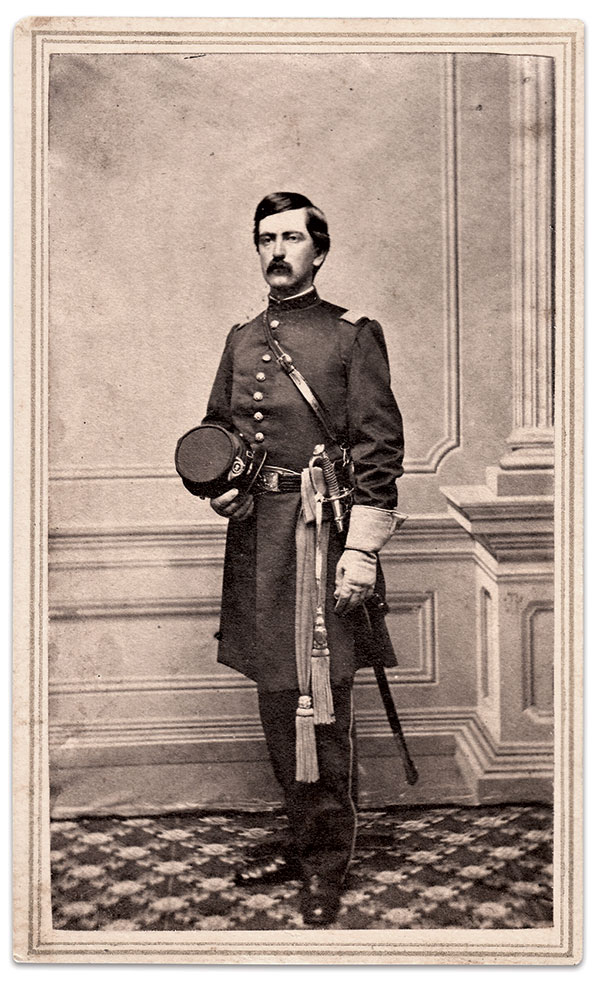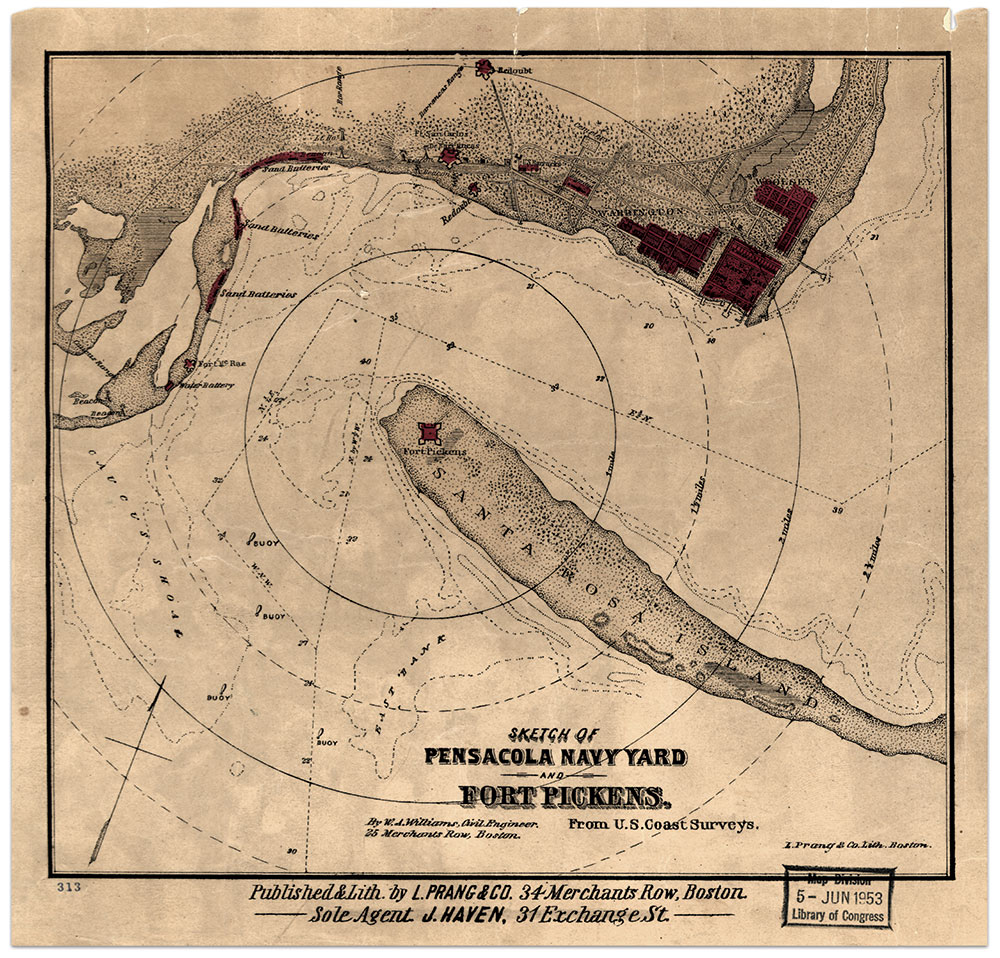
Francis Randolph Leeds enjoyed a sterling reputation as a cashier at the Stamford Bank in Connecticut. Popular with customers and others in town, the 27-year old applied to raise a company for a new regiment in the summer of 1862. Leeds quickly filled the roll with 110 recruits, more than the required quota.
The state designated them as Company C of the 23rd Infantry. Leeds, however, did not receive the captain’s commission he anticipated in recognition of his recruiting efforts. He successfully lobbied Gov. William A. Buckingham for a captaincy and the re-designation of his men as Company A of the 28th Infantry.
By the time it and the rest of the regiment left for Camp Terry in New Haven in mid-September, Leeds had contracted typhoid fever and stayed behind in Stamford.
While he recuperated, the 28th trained at Camp Terry and in New York at Centerville, Long Island, with other Connecticut regiments. At the end of November, the 28th traveled by steamer for an arduous journey to Ship Island in Mississippi, Camp Parapet in Louisiana, and finally, by the end of 1862, Pensacola, Fla.
In Pensacola, the men took refuge in houses abandoned by Confederates and occupied much of their time on drill and guard duties. Occasional expeditions into the interior and along the coast broke the monotony of camp life.
Meanwhile, Leeds’ recovery took far longer than he expected. Impatient to be with his company, he cut his recuperation short and joined them on Feb. 1, 1863. A week after his arrival on February 8, medical staff admitted him to the regimental hospital with dysentery. He succumbed to the effects of the disease on February 17 at age 27.

One of the men in the ranks of Company A, Noah Webster Hoyt, reported Leeds’ fate in his diary: “The body was boxed for shipment and on the 18th, to muffled drums, placed on a steamer to Fort Pickens. There they obtained a cask and 35 gallons of whiskey into which we put his body.” The steamer departed without the alcohol-embalmed remains, which were shipped on February 25.
Leeds’ family buried the body in Stamford’s Woodland Cemetery, where it rests today.
A Stamford historian observed, “few young men were ever more universally esteemed than he,” adding that the captain was “deeply lamented by his command, who seemed to love him with an affection truly fraternal.”
The men Leeds recruited for Company A and their comrades in the 28th went on to participate in the Siege of Port Hudson. In the attack against the formidable Confederate defenses on June 14, 1863, 100 members of the 28th volunteered for the 250-man forlorn hope that spearheaded the failed assault. The survivors of the 28th mustered out on Aug. 28, 1863, at the conclusion of their one-year term of enlistment. Their number included Pvt. Hoyt, who lived until 1909.
Scott Valentine is a MI Contributing Editor.
SPREAD THE WORD: We encourage you to share this story on social media and elsewhere to educate and raise awareness. If you wish to use any image on this page for another purpose, please request permission.
LEARN MORE about Military Images, America’s only magazine dedicated to showcasing, interpreting and preserving Civil War portrait photography.
VISIT OUR STORE to subscribe, renew a subscription, and more.

